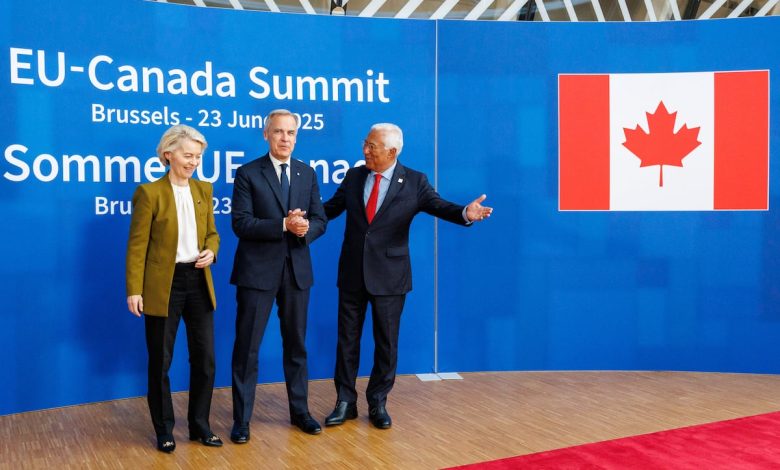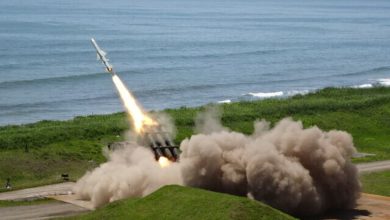Canada, EU sign defense pact that could enable joint weapons work

MILAN — Canada and the European Union have signed an ambitious defense pact involving deeper cooperation on cyber, maritime, and space security, paving the way for joint weapon procurement between the two allies.
European Council President António Costa and Canadian Prime Minister Mark Carney signed the EU-Canada Security and Defence Partnership during the first leg of the North American leader’s Europe visit this week.
The agreement lays the groundwork for increased defense procurement collaboration primarily related to the ReArm Europe Plan, a European Commission project to mobilize €800 billion in capital for greater defense spending.
“The partnership will launch work towards a bilateral agreement related to the Security Action for Europe (SAFE) instrument [a €150 billion loan mechanism dedicated to joint procurement] and explore the possibility of establishing an administrative arrangement between Canada and the European Defense Agency,” a joint statement said.
The document also made specific mention of enhanced coordinated naval activities as a key priority as well as boosting industrial cooperation.
In recent months, Canada has been working to bolster its role in the international maritime security domain with a special focus on Arctic defense, cybersecurity and increased work with international allies.
The European Union is Canada’s second-largest trading partner, with bilateral trade of goods growing by 64% between 2017-2024, after the implementation of the Comprehensive Economic and Trade Agreement abolished almost all tariffs between the two allies.
Ten EU member states have yet to ratify the CETA deal, including France, Italy, and Poland, indicating that it is not enforced to its full capacity.
The EU-Canada security pact also highlighted that Canada will appoint its defense representative to the EU.
However, for Canadian defense companies to be able to bid on the bloc’s military projects, further negotiations will be required and a second trade deal will have to be signed.
Since being elected in March, Carney has focused a lot of his efforts on adopting new policies that seek to distance Ottawa from the United States and pivot to Europe instead. The move aims to diversify the country’s portfolio of suppliers.
In a recent interview on the Canadian television show Power Politics, Carney said “75 cents of every [Canadian] dollar of capital spending for defense goes to the United States. That’s not smart.”
The Canadian prime minister will continue his European tour by attending the NATO Summit in The Hague on June 24, during which allies are expected to commit 3.5% of their GDP to be spent on weapons and personnel and an additional 1.5% on other related investments.
Canada has been one of the biggest laggards in reaching NATO’s 2% target, ranking 27th out of the 31 members in 2024, by spending 1.37% of its GDP on defense.
Elisabeth Gosselin-Malo is a Europe correspondent for Defense News. She covers a wide range of topics related to military procurement and international security, and specializes in reporting on the aviation sector. She is based in Milan, Italy.







